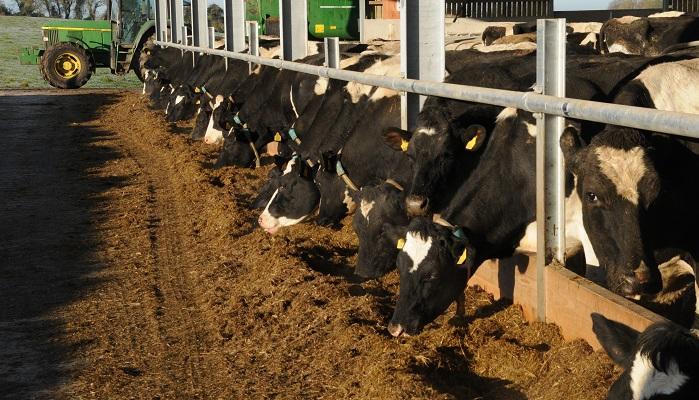29 February 2024
Maintain milk fever prevention protocols in March

As the calving season progresses on dairy farms, the risk of milk fever and metabolic issues increases, writes Dr Joe Patton, Teagasc Head of Dairy Knowledge Transfer. This is because later-calving cows tend to be older and are at high risk of being too high in body condition due to longer days dry.
Attention to detail on feeding dry cow minerals may also have slipped, as the farm is now very busy with calves, milking and grassland management.
Some tips to prevent problems are:
- Make sure the dry cows are receiving the correct amount of minerals per cow in the pen. This will usually be 100-120g/cow.
- Ensure that minerals have at least 22% Magnesium included and high levels of Vitamin D (14,000 units plus). Older cows in particular need high levels of Vitamin D to prevent milk fever.
- Many farms have benefitted from running a ‘fresh-cow group’ where cows are kept indoors and separate for milking until three days after the colostrum period is finished. It is tempting to give up on this in March as calving slows down; however it should be continued as the benefits are large for later calvers.
- Restrict later calving cows (April/May) to 10-11kg DM in March to keep BCS under 3.5. Where March-calving cows are already over-conditioned, it is too late to fix BCS in the last 2-3 weeks. Make sure cows have ad-lib access to forage and manage milk fever at point of calving.
- Make sure cows on the point of calving are fed low potassium (K) forage (under 2.2%). This is very important to prevent milk fever. If you don’t have low K silage in the yard, buy some bales and feed for 1-2 weeks pre-calving.
- Many farms use a ‘bottle under the skin’ at the point of calving to prevent milk fever. There is good evidence that this may increase risk of clinical/sub-clinical milk fever after 24-36 hours post calving. A high Calcium bolus with added Vitamin D is recommended instead of straight calcium bottles for this purpose. Of course, bottle calcium still plays a key role in clinical cases. Discuss with your vet.
Also read: Mineral supplementation for dry cows
Also read: Managing SCC in freshly-calved cows
